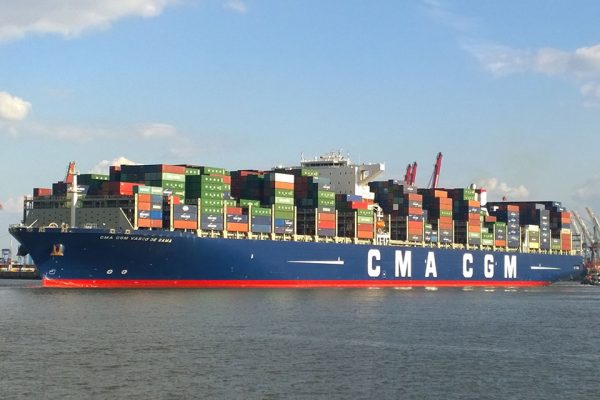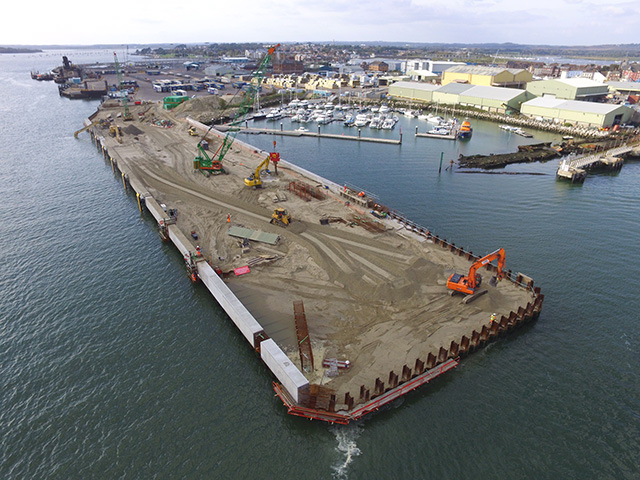The MAIB has found a lack of proper planning resulted in the grounding of the 399-metre container vessel, CMA CGM Vasco de Gama, on the western side of the Thorn Channel off Southampton
An investigation into the grounding of the British-registered ultra-large container ship, CMA CGM Vasco de Gama, on the western side of the Thorn Channel off the Port of Southampton has found poor planning was to blame for the incident.
The ship ran aground on a rising tide on a flat shingle and sand sea bed in the early hours of 22 August 2016.
The Marine Accident Investigation Branch (MAIB) said the grounding occurred because the vessel was too far north of the intended track when the turn into the Thorn Channel was commenced.
“This reduced the sea room available for the manoeuvre and, given the environmental conditions, CMA CGM Vasco de Gama was unable to sustain the rate of turn required to remain in the dredged channel,” noted the branch’s report into the incident.
A combination of tugs and ship’s engines enabled it to be re-floated soon after grounding, and the Vasco de Gama sustained no damage.
At the time of the incident, two Port of Southampton pilots were on board the ship as it made its approach into port.
The Marine Accident Investigation Branch (MAIB) has found that although the ship’s bridge team and the port’s pilots had “the experience, knowledge and resources available to plan and execute the passage effectively”, the standards of navigation, communication and the effective use of the electronic charting aids onboard “fell short of the standards” of the port and CMA Ships, which owns the 399-metre long vessel.
Investigators cited “complacency and a degree of over confidence on the part of the master and port pilots ” as contributing factors.
Continues below…
New codes of practice to improve fishing safety introduced
From today (23 October), three new codes of practice have been introduced to improve safety for everyone in the fishing
Poole’s South Quay expansion nears completion
The first ships are expected to dock at the newly expanded South Quay in Poole from January
The report also highlighted the lack of a detailed pilotage plan.
It said the execution of the ship’s turn around Bramble Bank and into the Thorn Channel was “not in accordance with the port’s guidance for large inbound vessels”, and as a result, the Vasco de Gama’s bridge team, assistant pilot and the Vessel Traffic Services could not usefully monitor the lead pilot’s actions, or the vessel’s progress through the Precautionary Area.
“The lead pilot’s intended manoeuvre around Bramble Bank was not explained; the bridge team roles and responsibilities were unclear; and the electronic navigation aids on board were not fully utilised,” stated the report.
The MAIB warned that the increasing size of ships within restricted waterways is leading to reduced margins of operation safety. As a result, proper planning and the monitoring of a passage “cannot be overemphasised”.
Since the accident, both CMA Ships and Associated British Ports have taken steps to improve navigational safety and address some of the issues identified in the report, including improving levels of navigation, bridge resource management, and the use of electronic navigation aids.
The findings of this report will be used by the MAIB as part of a safety study that will investigate the use of modern electronic navigation aids on board merchant vessels, and the impact they have had on navigation practices.






